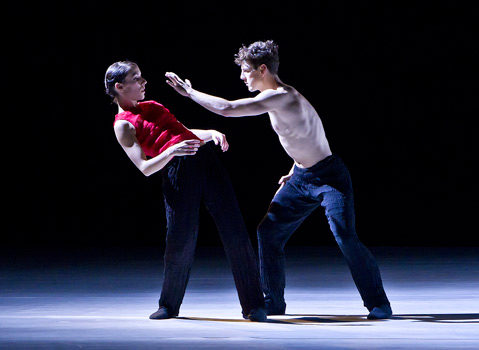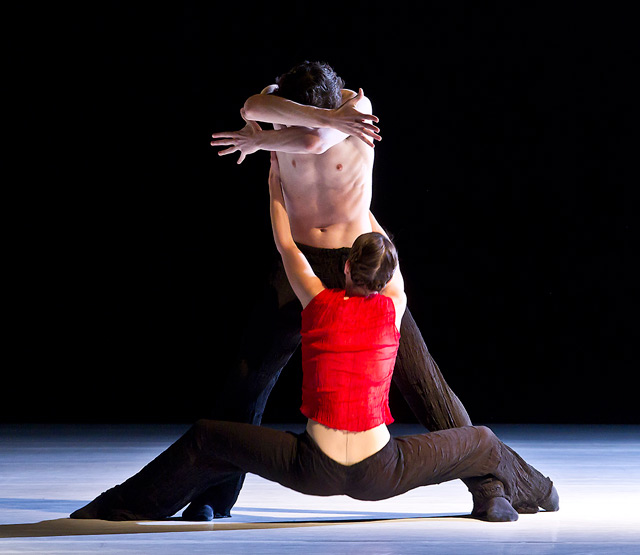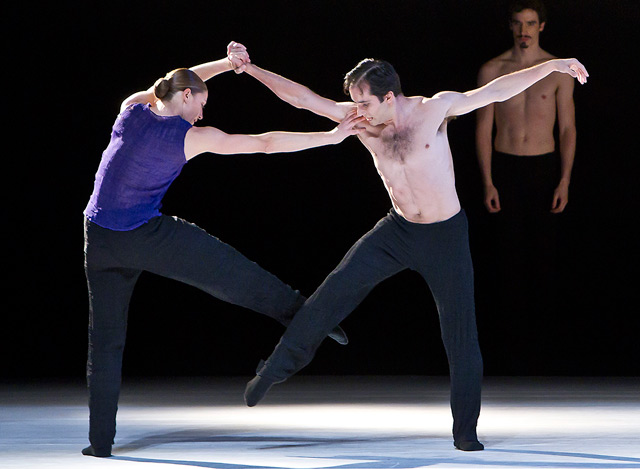Hubbard Street Dance Chicago at the Granada
Contemporary Dance Company Performs Works by Jiří Kylián and Johan Ingen on Tuesday, October 25

It’s 10 to 8 p.m., the house lights are on, and as the Granada’s seats begin to fill, there’s a corresponding buzz onstage. The curtain is already up on the dancers of Hubbard Street Dance Chicago, who ignore the audience as they warm up, eyes on the floor, marking through the passages of movement they will soon perform.
The show hasn’t started yet; the show has already begun.
So began an evening of delicious subversions and manipulations. Hubbard Street’s 17 dancers are among the most accomplished, powerful, and versatile anywhere. Performing works by contemporary choreographers Jiří Kylián and Johan Inger, they are at once sleek and honest; every moment is worked to a high polish, yet the impulse beneath it remains raw. The result is a series of hugely gratifying contradictions: The long clean line of a classical arabesque rumples to the floor like a noodle and bounces back up like a rubber ball, and a regal strut melts into knock-kneed hobble.

Kylián’s “27’52”” is all about manipulation. Nobody notices the strips of flooring laid on the stage until the dancers begin to lift them, changing the very plane on which the dance takes place. There are no wings, only white panels that descend and rise and eventually fall to the stage. Even Kylián’s movement vocabulary takes the familiar — classical extensions, turnout, weightlessness — and twists it, throws it far off center, and turns it in upon itself. The classical dancer resists gravity, but here the dancers resist each other: A woman shrinks away from a man’s touch; he pushes his foot against her hip for balance.
Partnering becomes the central trope in Kylián’s “Petite Mort,” with its obvious references to coupling. At first, it’s nearly naked men coupled with fencing foils, which they stroke and bend, thrust and dangle. Behind them in the shadows stand the women in enormous black dresses, which turn out not to be dresses at all, but hollow forms on wheels, around which they cavort in corsets and underpants. Set to Mozart piano concertos, “Petite Mort” is lushly sensual, even in its most ludicrous moments. Like the act it echoes, it’s all buildup, and it ends with an almost frustratingly sudden climax.

It’s Inger’s “Walking Mad” that really explodes expectation. Set to Ravel’s famous “Boléro,” it begins with a single figure in a trench coat and builds to a madcap flurry of characters in party hats and nightgowns. Much of the surprise is based around the set — a hinged wall that folds and rolls, constantly redefining the space. But despite the Chaplinesque antics, “Walking Mad” is suffused with humanity. When one woman gets shut out of the party, the rousing score dwindles to a tinny squeak, and she throws herself against the wall again and again, fighting to hear the music.



